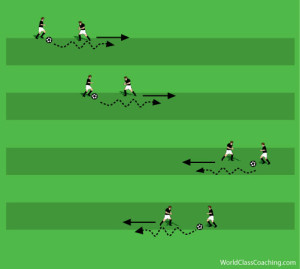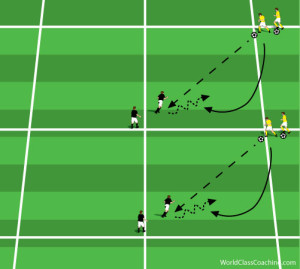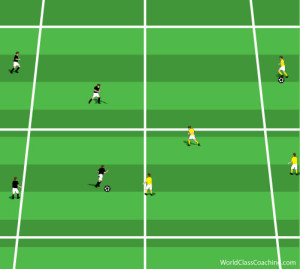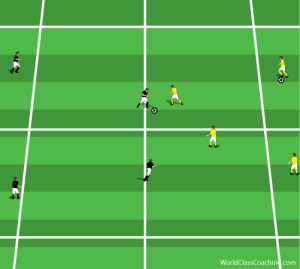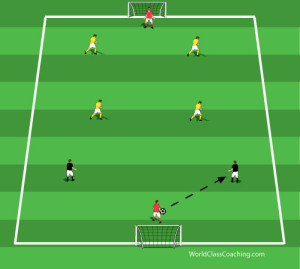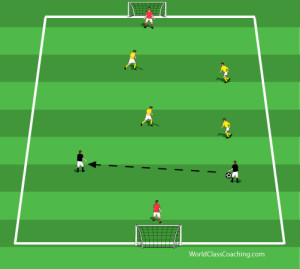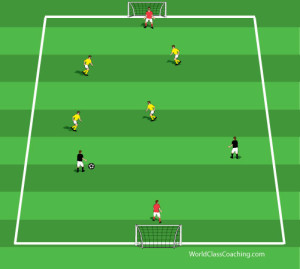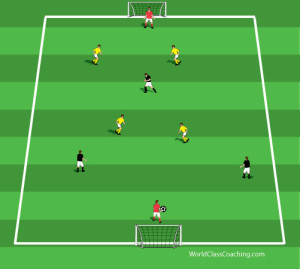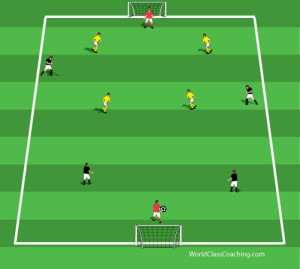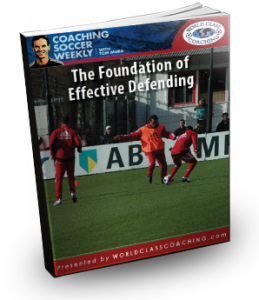Podcast: Play in new window | Download
Subscribe: Apple Podcasts | RSS
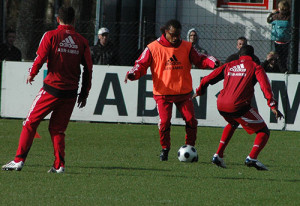 Last week I enjoyed a great break over the Thanksgiving holiday weekend. Lots of time spent with family and friends. It also gave me a chance to catch up on podcast episodes that I hadn’t listened to.
Last week I enjoyed a great break over the Thanksgiving holiday weekend. Lots of time spent with family and friends. It also gave me a chance to catch up on podcast episodes that I hadn’t listened to.
I try to keep up with the latest episodes of Youth Soccer Evolution, Winning Youth Coaching, Coach Your Best and a new one I discovered called, Coach Bain Mused.
It is hosted by Alistair Bain. The episode I listened to was a conversation between Coach Bain and Kevin McGreskin, the Bahama’s Technical Director. McGreskin also developed the Soccer EyeQ system that I talked about in episode 22 on developing vision and awareness.
It was a great conversation that covered a number of topics but specifically on the importance of getting the most out of every training session. It was a very interesting and inspirational discussion that got me thinking about how to maximize my own training sessions.
Training Session
Each year we are forced indoors by the unpredictable Midwest winters. While we would be able to achieve more game specific training if we were able to play the outdoor game year round I really enjoy the move indoors because it allows me to work on technical and tactical topics in a different way.
There is such a great transfer in training from the work that we do indoors to the outdoor game. My teams are always playing at a much higher level each spring because of what we are able to accomplish during the indoor season.
In our first couple of training sessions of the winter I always focus on the key principles of defending in Futsal: Getting everyone back in five seconds, defend the middle first and making sure we don’t get split.
Warm-Up
One attacker dribbles while a passive defender focuses on the proper body shape, distance and angle of pressure. When the dribbler reaches the far side of the court the players trade roles.
Coaching Points
- One foot in front of the other
- Quarter turn
- Bent knees – Athletic Position
- Forcing the dribbler one way
1 v 1
The defender passes the ball to the attacker. The attacker tries to dribble across the defenders line. The defender works to keep the attacker in front of her and win the ball when possible. If the defender wins the ball she tries to dribble across the defenders line.
Coaching Points
- Bend your run
- Take one side away
- Get across dribbler to win the ball
- Don’t just poke it out of play
2 v 2
The same game is now played with two attackers and two defenders. At first the attackers only pass the ball when I say, ‘Go’. This gives me time to coach the defenders.
Coaching Points
- Closest player pressures the ball and forces the dribbler one way (toward the other defender in this case)
- Second defender covers behind the first defender, splitting space between the attackers
When I say, ‘Go’, the ball is passed to the second attacker and the defenders adjust their positions.
Once the players are comfortable with their movements the game is played freely with the attackers trying to dribble across the defenders line. If the defenders win the ball they transition to attack and the attackers transition to defense.
Look for teachable moments to cover the ways to defend give-and-goes and overlaps.
With older or more experienced players focus on the communication of the players. The second defender should direct the first defender so that they can work together to win the ball.
This episode of Coaching Soccer Weekly is sponsored by ZoomReports.com. If you’re a coach looking to give your players valuable feedback or a director of coaching searching for a way to manage the evaluations for your whole club you should try a free trial of ZoomReports by going to ZoomReports.com and entering the promo code CSW when registering for the free trial.
2 v4 Phase of Play
Two attackers receive the ball from the goalkeeper and work against four defending players. At first the attackers only pass when I say go so that we can work on the defending teams positioning.
As with the 2 v 2 game, the player nearest the ball pressures while the other forward covers and anticipates a pass.
The players then slide across to get pressure and prevent penetration on the other side.
Once the players have an understanding then they play freely with the two attackers trying to score on the defending team. If the defending team win the ball they can counter attack. Each new play starts from the goalkeeper.
3 v 4
As this becomes easy for the defending team then a third attacker is added in the space between the lines of the defending team. It becomes even more important that the front two players don’t get split by a penetrating pass.
4 v 4
This begins as a phase of play with the goalkeeper of the attacking team always starting with the ball. Once the players have gained an understanding of their defensive movements then we transition to a regular Futsal game.
This is a Futsal session but the concepts apply to any indoor or outdoor game. The purpose of the indoor season for me is to prepare the team to return to the outdoor game in the spring. This session will have your team defending better when the spring comes around.
Printable Show Notes
The show notes for each episode are accessed through the WCC Training Center.
They are FREE but you will need at least a Free Membership to the Training Center in order to view and print them.
Click on the image of the notes and if you’re already logged in to the Training Center you’ll be taken to the Podcast page. If you’re not logged in your be taken to a login page where you’ll also be able to login or register if you are not already a Member.
Remember!
Make sure you subscribe to Coaching Soccer Weekly through iTunes, or your podcast provider of choice, to be sure you never miss an episode.
We would appreciate it if you would leave us a 5 star rating and a written review on iTunes to help spread the word about the show and the information that we are sharing here.
In the Next Episode
I’m going to share some of the conversations I’ve had with coaches that listen to the podcast. I’ve received some great questions that have led to interesting exchanges. I’m sure that other coaches have similar questions so I thought it would be helpful to share those questions and answers on the show.

